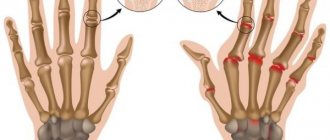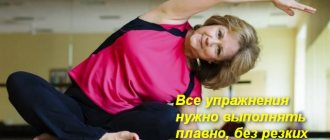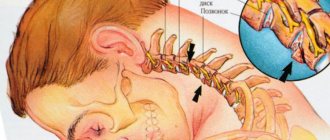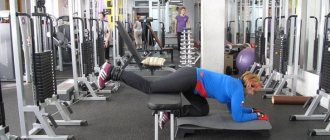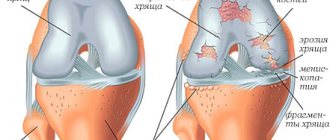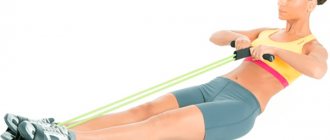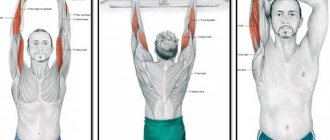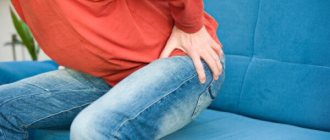A set of exercises for fingers
The main causes of pain in the joints of the fingers include overwork, illness or injury. If pain is felt in the joints of the fingers, appropriate measures must be taken immediately. First, it is better to consult a specialized doctor: a traumatologist, a neurologist or a surgeon. Regular finger training and palm exercises develop strength, improve joint mobility, and relieve pain.
- Exercise Fist
Straighten and stretch your fingers, feel the tension in your muscles and joints. There should be no pain. Start with a simple stretch: make a fist with your fingers and place your thumb on top of your other fingers. Hold for 30-60 seconds. Then unclench your fist and straighten your fingers, spreading them wide. Repeat at least 4 times for each hand.
- Exercise Finger stretching. Use this exercise to relieve pain and improve joint mobility
Place your hand, palm down, on a flat surface. Gently straighten your fingers, placing them on the surface, without forcing or straining the joints. Hold for 30-60 seconds, then relax, returning to the starting position. Repeat at least 4 times for each hand.
- Exercise Claws. This exercise develops finger mobility:
Place your hand in front of you with your palm facing you. Bend your fingers so that your fingertips rest on the base of your knuckles. The hand should look like a clawed paw. Hold for 30-60 seconds. Repeat at least 4 times for each hand.
- Exercise Grip. An exercise to develop your grip, helps you handle door handles and hold objects.
Take a soft ball and squeeze it as hard as you can. Hold for a few seconds, then release. Repeat 10-15 times for each hand. Perform this exercise 2-3 times a week, with an interval between them (at least 48 hours). Do not perform this exercise if your thumb joints are injured.
- Exercise Pinch
The exercise develops the muscles of the fingers. This helps with handling keys, opening packages, and gassing up the car. Pinch the soft ball between your thumb and one of your other fingers. Hold for 30-60 seconds. Repeat 10-15 times for each hand. Perform this exercise 2-3 times a week, with an interval between them (at least 48 hours). Do not perform this exercise if your thumb joints are injured.
- Exercise Finger Raising. The exercise develops joint mobility and finger flexibility.
Place your hand, palm down, on a flat surface. Take turns lifting your fingers and placing them back on the surface. You can lift all your fingers at once. Repeat 10-12 times for each hand.
- Exercise Thumb abduction. The exercise develops the muscles of the thumbs, helping to better cope with gripping and lifting things, such as cans and bottles.
Place your hand, palm down, on a flat surface. Use a rubber band to secure your palm and thumb together. Move your thumb to the side, overcoming the resistance of the elastic band. Hold for 30-60 seconds, relax. Repeat 10-15 times for each hand. Perform this exercise 2-3 times a week, with an interval between them (at least 48 hours).
- Exercise Thumb Flexion. The exercise develops the mobility of the thumbs.
Place your hand in front of you, palm up. Move your thumb to the side. Then bend your thumb toward your palm so that it touches the base of your little finger. Hold for 30-60 seconds, relax. Repeat at least 4 times for each hand.
- Exercise Thumb Touch. The exercise develops the mobility of the thumbs, helps you better cope with brushing your teeth with your cheek, eating with a fork and spoon, and writing with a pencil and pen.
Place your hand in front of you, wrist straight. Touch each finger with your thumb in turn, forming an "O" shape. Hold for 30-60 seconds, relax. Repeat at least 4 times for each hand.
- Exercise Thumb Stretching. Two stretching exercises for the thumbs.
Place your hand in front of you with your palm facing you. Bend your thumb towards your index finger. Hold for 30-60 seconds, relax. Repeat at least 4 times for each hand. Place your hand in front of you with your palm facing you. Pull your thumb over your palm, using the lowest knuckle. Hold for 30-60 seconds, relax. Repeat at least 4 times for each hand.
Treatment of polyosteoarthrosis of the fingers
When detected in time, polyosteoarthrosis is treated quite easily. To improve the condition of cartilage tissue, it is useful for all those suffering from polyosteoarthrosis to take chondroprotectors: glucosamine and chondroitin sulfate. These drugs gradually restore defective articular cartilage and thus knock out the “base of the disease.”
The effect of chondroprotectors can be enhanced with the help of vasodilators: trental and theonicol .
During an exacerbation, the patient can be prescribed non-steroidal anti-inflammatory drugs: voltaren, ibuprofen, indomethacin, ibuprofen. The use of these medications helps in a short time to make life easier for those patients in whom polyosteoarthrosis occurs most acutely, with severe pain or burning in the area of inflamed arthrosis nodules.
Locally, for polyosteoarthrosis of the fingers, ointments based on non-steroidal anti-inflammatory substances are widely used: ipdomethacin, butadione, dollit, fastum and voltaren-gel. Anti-inflammatory ointment is rubbed directly into the arthrosis nodule itself during the period of its formation or exacerbation; treatment is carried out with a course of 20–30 daily rubbing of ointment or gel into sore joints. In general, such ointments help approximately 60–70% of patients.
Lotions with bischofite provide an even greater therapeutic effect .
Bishofite is an oil derivative, a brine obtained during oil drilling. It gained its fame thanks to drillers who were the first to pay attention to its therapeutic effect on polyosteoarthrosis of the fingers. While working in oil wells, drillers experienced resorption of Heberden's and Bouchard's nodes due to constant contact with oil brine. Later it turned out that Bishofite has a moderate anti-inflammatory and analgesic effect, and also has a warming effect, causing a feeling of pleasant warmth.
It is especially useful for polyosteoarthrosis of the fingers to make so-called “mittens” with bischofite: an ordinary medical bandage is generously soaked in bischofite brine and each sore finger is wrapped with this bandage. A regular transparent plastic bag is placed on top of the hand, and cotton mittens (garden or kitchen) are placed on top of the bag. This therapeutic “mitten” is removed after 2–3 hours. The course of treatment consists of 20–30 procedures performed every other day. 1 month after the first course of treatment with bischofite mittens, the same course can be repeated.
With the help of such “mittens”, most of my patients managed to significantly improve the condition and appearance of sore fingers in a short time. The advantages of such treatment include its harmlessness and complete absence of side effects. Only in some cases was skin irritation noted, which required either canceling the procedure or switching to an intermittent course of treatment - one compress (or “mitten”) every 3-4 days.
By the way, those few patients who were not helped by medicinal “mittens” with bischofite can try replacing bischofite with medical bile. It is quite easy to buy in pharmacies, and it is inexpensive. “Mittens” with medical bile for polyosteoarthrosis of the fingers are made in exactly the same way as mittens with bischofite.
Among the physiotherapeutic methods of treatment for Heberden's and Bouchard's nodules, therapeutic mud and paraffin therapy are successfully used.
In the most severe and rare cases, when polyosteoarthrosis occurs with prolonged inflammation of the joints and severe pain, the patient can be prescribed a special drug - Plaquenil. For polyosteoarthrosis, Plaquenil should be taken daily for a course of 6 to 12 months. The use of Plaquenil helps to gradually extinguish inflammation in arthrosis nodules and reduces the risk of relapses (more details about Plaquenil are described in the section on the treatment of rheumatoid arthritis).
Article by Dr. Evdokimenko© for the book “Pain and Numbness in the Hands”, published in 2004. Edited 2011. All rights reserved.
READ MORE:
- No more medications needed?
- All articles by Dr. Evdokimenko
Methods and periods of exercise therapy
Complexes of physical therapy depend on the stage of development of the disease and the physical characteristics of the patient.
The group method of preventive physical education takes place under the supervision of a therapist in specialized rooms. There are up to 10 people in a group.
The advisory method is used during the period of stable remission after a course of treatment. In this case, a patient with arthritis of the fingers and hands can do physical exercises at home. This approach requires periodic visits and examination by a rheumatologist.
The third method is individual training. This type of gymnastics is suitable for patients with complications in the last stages of the disease.
Gymnastics are prescribed by a rheumatologist, with the selection of an individual system for each patient.
All methods of exercise therapy are divided into 3 periods:
- The first stage is to prepare the joints for stress. Exercises are performed for 10 minutes for 2-3 days.
- At the main stage, the arm muscles and joint tissues are strengthened. Gymnastics are performed for 15–20 minutes for two weeks.
- The final period lasts up to 5 days before discharge; at this stage, the set of exercises that the patient will perform at home is finally determined.
Leg exercises
1. Lying on your back, bend your leg at the knee joint without lifting the sole from the surface (sliding steps).
2. Exercise “Bicycle”.
3. Spread your legs bent at the knees to the sides and bring them back.
4. Swing with a straight leg while lying and standing, holding onto a support.
5. Circular movements in the hip joint with the leg bent at the knee.
6. Raising straight legs to the sides in a lying position.
7. Circular movements with a straight leg.
Water gymnastics
Hydrokinesitherapy - therapeutic exercises in a pool with thermal water very effectively relax the joints of the whole body, including the upper limbs.
Water gymnastics for hand joints with arthritis effectively helps in the fight against rheumatic arthritis. Warm water relieves pain and muscles relax because in water the body does not feel its weight. This type of gymnastics is suitable even for patients with severe disabilities.
For arthritis of the joints of the hands and fingers, hand movements performed while swimming have a beneficial effect.
It is also effective to perform exercises by immersing yourself in water in a standing position. You can make circular movements with your shoulder and wrist joints, move your fingers up and down and rotate them.
It is not recommended to resort to water diseases for patients with allergies to chlorine, open wounds and ulcers, sexually transmitted diseases, inflammation of the throat, eyes and ears.
